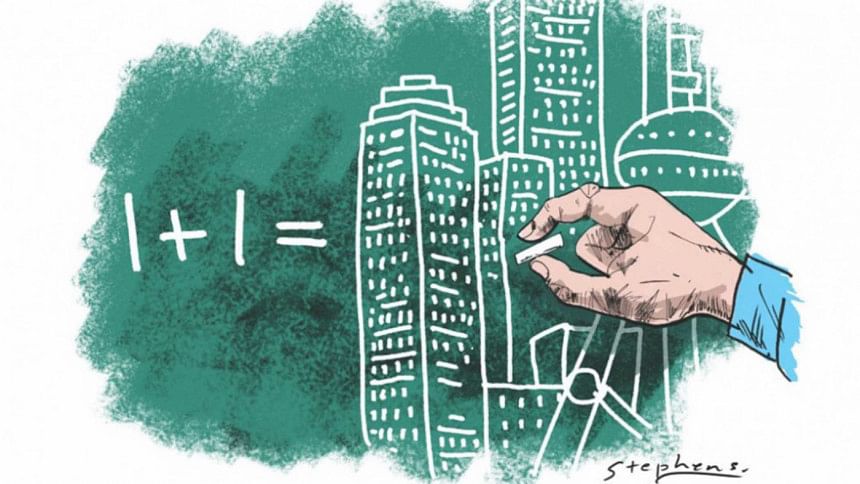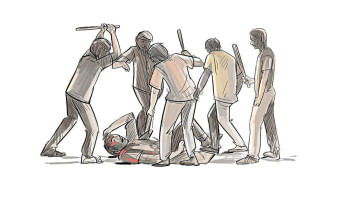For effective town planning, we must learn from past mistakes

Town planning is both a science and an art of designing and developing urban areas. The job of town planners is to make a city both aesthetically attractive and optimally functional. A planned city can attract private investment and ensure a higher rate of employment and growth. However, a well-thought-out plan requires a multi-disciplinary approach and contributions from a variety of experts, including urban and regional planners, architects, civil engineers, environmentalists, geographers, transport engineers, hydrologists, surveyors, economists, water and sanitation engineers, and even agriculturists. Again, an effective plan needs thorough research to understand the trends of city growth, surrounding environment, transportation network, urban management system, and financing mechanism. The planning has to be a participatory process, so it should take inputs from the landowners, businessmen, public officials, local government representatives, working people, politicians, and professionals.
Just like planning an urban area is vital, its proper implementation is also critical in achieving the desired space for its residents to enjoy living there. However, both the planning and implementation processes could go wrong—and that's what is happening in Bangladesh. There has been plenty of criticism for our failure in formulating good town plans and ending up with poor physical environments. If we look back, we can see that our master planning methods and processes have not been appropriate, and as a result failed to produce the desired outcomes.
It is important to note that out of several hundred cities and towns of various sizes in the country, only the four largest ones have undergone full-scale master planning exercises followed by their implementations: Dhaka, Chattogram, Rajshahi, and Khulna. The master plans of many other cities have been prepared in recent years, but their use is still very limited. A master plan lays out the uses of the land—such as housing, offices, businesses, industries, administrative areas, schools, hospitals, roads and streets, open spaces, etc—keeping the future projected development pattern of a city in mind.
Planning is an essential prerequisite for the orderly development of a city. A set of planning standards are followed in formulating a master plan. In Bangladesh, the town planning processes have been unnecessarily long. The physical feature surveys and preparation for detailed land-use plans take an inordinate amount of time to complete and get approved by the government. After the first master plans of Dhaka and Chattogram cities were prepared in 1959, followed by the Khulna city master plan in 1961, the decision to develop the second set of plans came after a long time—in the early 1990s. The Rajshahi city master plan, which was prepared in 1968 and then updated in 1984 and again 20 years later, in 2004, were somewhat better implemented due to the cooperation between the Rajshahi City Corporation and the Rajshahi Development Authority.
The first master plan of Dhaka city (1958-1978) was implemented to some extent, establishing several housings, businesses and industrial zones like Tejgaon industrial estate, but the successive plans failed to keep pace with the fast population growth, and the demand for serviced land far exceeded the supply. Higher population density in the core areas of the city produced conditions unfavourable to rebuilding and renovation, and unfortunately, failure to come up with a good plan since 1978 caused a great setback for the city's proper growth. Even the current Dhaka Structure Plan (2016-2035) has not considered the issues of water-logging and traffic congestion properly.
Interestingly, the town plans have a long-term span of 20 years without having medium-term plans corresponding to the national five-year plans. During this long period of time, the urban scenario changes, and the plans become obsolete. The plans are static and, although Section 74 (2) of the Town Improvement Act, 1953 allows to amend the plans when required, there is no mechanism to constantly review and update them based on the realities on the ground.
While the problems of urban living are dynamic in nature, the urban planning concept adopted by the city development authorities has been static, which is not appropriate to tackle the everyday challenges of our cities. The most critical challenge posed by the master plans is related to the forecasted population of the cities and their infrastructural needs. The actual population growth far outpaced the projected growth of the cities and upset the development proposals in the master plans. Although this was discussed among the planning professionals and policymakers during the 1980s, the subsequent plans did not become dynamic in approach and failed to address the ever-widening challenges posed by rapid urbanisation.
Again, not many consultations were held with the key stakeholders during the planning process, so the master plans turned out to be a top-down exercise. The master plans were also not followed up with development and investment plans. Adequate public control over future development has not been built into the plans, and thus private interests ultimately dictated the horizontal and vertical growth of the cities. This ultimately caused a significant deviation from the plans, but most of it went undetected because of the lack of an effective monitoring mechanism. One major reason for this is also the non-involvement of the private sector in the planning process and securing their buy-in for development of an aesthetically attractive city when the state's control in managing the urban space declines.
The town plans also don't accommodate the needs of people of all social strata, particularly the poor. Consequently, a large number of poor families live in slums in terrible conditions. These people and many lower middle-income families mainly live in the outskirts of the cities. Due to linear development of the cities, rather than a multi-modal mixed pattern of development, they require long-distance travels on a daily basis to the inner city for the purpose of work, causing tremendous traffic congestions.
There is also the issue of ignorance regarding the master plan on the people's part. The city residents don't have much idea about the designated residential areas, reserved open spaces, and land proposed for acquisition for creation of industrial zones, parks, schools, hospitals, offices, etc. Until recently, there was no online and standard building plan application system to make the process easy and quick. Now that it has been introduced, we need to wait and see if the online system works.
The resources estimated in the plans are found to be unrealistic—the actual outlays far exceed the suggested cost of infrastructure and services. One of the fallouts of this weakness in the plan is delay in implementation of major roads and infrastructure, and even housing projects, such as Purbachal and Uttara residential areas in Dhaka.
The town plans need to be formulated on time, be realistic, take care of critical urban issues, and be updated as per requirement. The plans must be adhered to and funded adequately.
Dr Nawshad Ahmed is an economist and urban planner, and a former UN official.

 For all latest news, follow The Daily Star's Google News channel.
For all latest news, follow The Daily Star's Google News channel. 



Comments